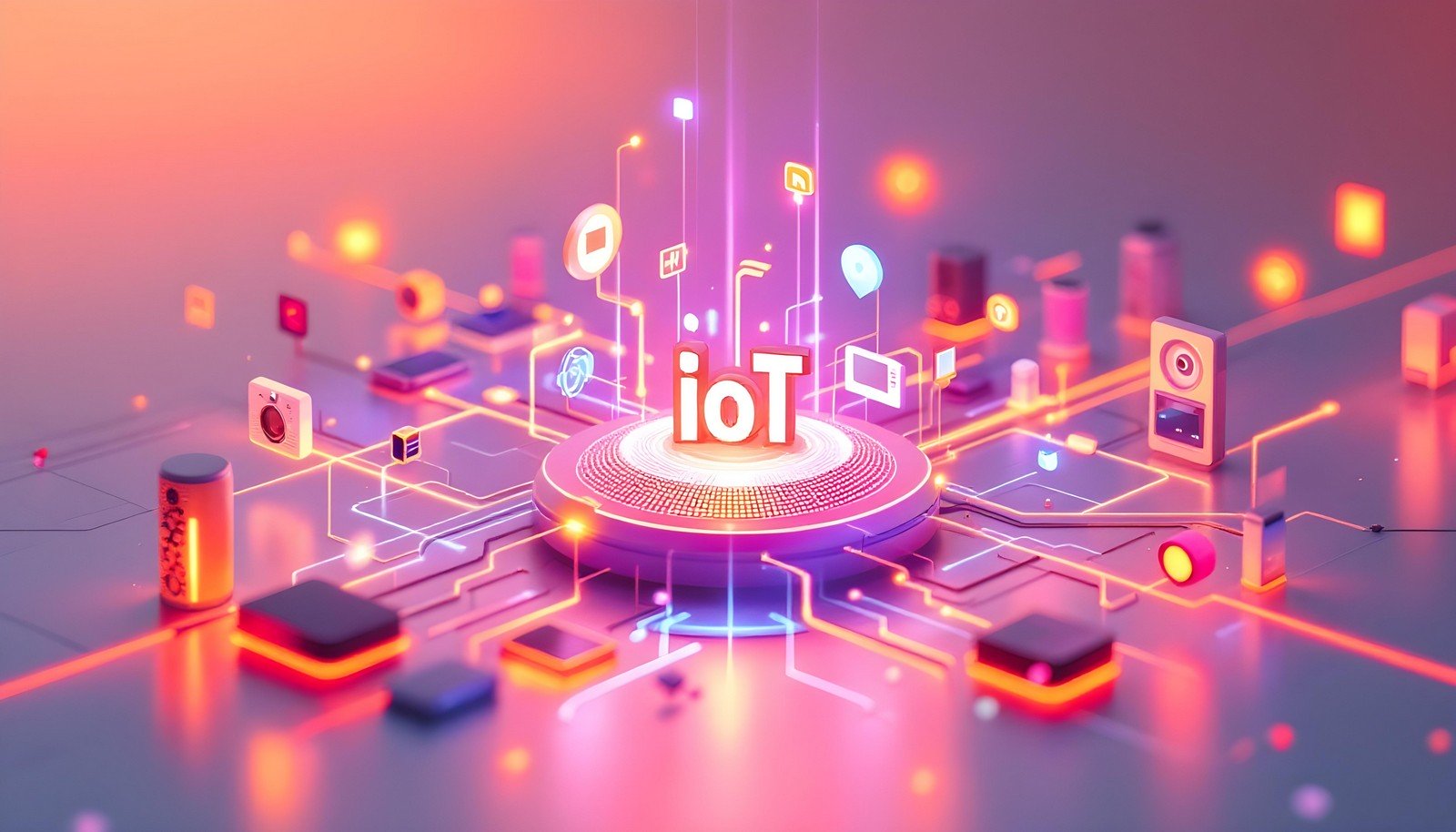IoT

Quick Navigation:
- IoT Definition
- IoT Explained Easy
- IoT Origin
- IoT Etymology
- IoT Usage Trends
- IoT Usage
- IoT Examples in Context
- IoT FAQ
- IoT Related Words
IoT Definition
The Internet of Things (IoT) refers to a network of interconnected devices embedded with sensors, software, and other technologies to communicate and exchange data with each other through the internet. These devices range from everyday objects like refrigerators, smartwatches, and cars to complex industrial tools. IoT enables automation, data-driven insights, and remote monitoring, transforming industries like healthcare, agriculture, and transportation.
IoT Explained Easy
Imagine all your toys could talk to each other and to you. They could tell you when they’re lost or if they need batteries. IoT is like that, except for things like lights, cars, or even refrigerators—they share information to make life easier.
IoT Origin
The concept of interconnected devices dates back to the early 1980s when researchers experimented with network-connected vending machines. However, the term "Internet of Things" was coined in 1999 by Kevin Ashton during his work on supply chain optimization.
IoT Etymology
The phrase "Internet of Things" combines "Internet," referencing the global system of connected networks, and "Things," which denotes objects or devices capable of communicating.
IoT Usage Trends
IoT has seen explosive growth in the last decade, fueled by advancements in wireless technologies and decreasing costs of sensors. Applications span from smart homes and wearables to industrial IoT (IIoT) for manufacturing and logistics, with increasing adoption in urban planning for smart cities.
IoT Usage
- Formal/Technical Tagging:
- Internet of Things
- Smart Devices
- Wireless Communication - Typical Collocations:
- "IoT devices"
- "IoT ecosystem"
- "smart home IoT"
- "IoT connectivity"
IoT Examples in Context
- Smart thermostats adjust your home's temperature based on your schedule.
- IoT-enabled agriculture uses sensors to optimize irrigation and monitor crop health.
- Fitness trackers provide health insights by collecting data about your activities.
IoT FAQ
- What is IoT?
IoT stands for the Internet of Things, a network of connected devices that communicate to automate tasks or provide insights. - What are common examples of IoT devices?
Examples include smartwatches, connected cars, smart appliances, and industrial sensors. - How does IoT work?
IoT devices use sensors to collect data, which is transmitted via the internet for analysis or action. - What industries benefit most from IoT?
Industries like healthcare, agriculture, manufacturing, and retail leverage IoT for efficiency and innovation. - Is IoT secure?
Security remains a challenge, but encryption, secure networks, and device updates help mitigate risks. - How does IoT impact daily life?
IoT simplifies tasks, improves convenience, and offers real-time insights—for example, smart home automation. - What is Industrial IoT (IIoT)?
IIoT refers to IoT applications in industries like manufacturing and logistics to enhance operations. - What are the challenges in IoT adoption?
Challenges include security concerns, data privacy, and the high cost of implementation. - Does IoT require internet access?
Yes, most IoT devices rely on internet connectivity for communication. - What are smart cities in the IoT context?
Smart cities use IoT for urban planning, including traffic management, waste collection, and energy efficiency.
IoT Related Words
- Categories/Topics:
- Smart Devices
- Wireless Networks
- Automation
Did you know?
In 2008, the number of IoT devices surpassed the global human population. Today, there are billions of connected devices worldwide, and this number continues to grow rapidly, revolutionizing how we live and work.
PicDictionary.com is an online dictionary in pictures. If you have questions or suggestions, please reach out to us on WhatsApp or Twitter.Authors | Arjun Vishnu | @ArjunAndVishnu

I am Vishnu. I like AI, Linux, Single Board Computers, and Cloud Computing. I create the web & video content, and I also write for popular websites.
My younger brother, Arjun handles image & video editing. Together, we run a YouTube Channel that's focused on reviewing gadgets and explaining technology.



Comments powered by CComment